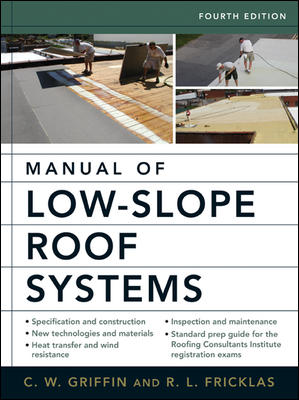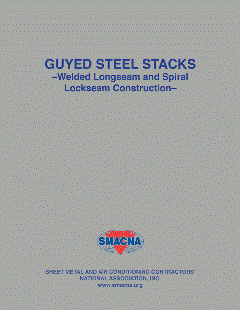10 Ways Roofing Contractors Can Avoid Latent Defect Claims

A latent defect is a hidden defect that exists at the time of construction but is undetected until after completion. A roofing contractor should consider protecting and insulating their business from latent defect claims on the front end through proper documentation and solid contract drafting to avoid finding yourself in a difficult defensive scenario.
The following article contains a variety of contract provisions which may provide you with protection. However, you should check your state and local requirements before incorporating these terms to make sure they are enforceable in your area.
1. Owner Acceptance
Include language in the contract that specifically states that upon final completion and inspection owner accepts the work in its “as is” condition. This provision may not survive in some states which mandate certain warranties or prevent this type of waiver of liability.However, a standard provision that could be included would be:
Upon completion of the project and final inspection by the Customer, Customer accepts all work performed by Contractor in its “as is” condition.
2. Pre-Existing Conditions
Contracts should include language that protect the company from pre-existing conditions.
Contractor disclaims all liability for all claims, disputes, rights, losses, damages, causes of action, or controversies (“Claims”) pertaining to Pre-Existing Conditions, whether those Claims arise in law, equity, contract, warranty, tort, or federal or state statutory claims. Customer is solely liable and responsible for all damages, whether actual or consequential, arising out of or relating to Pre-Existing Conditions.
3. Notice
Include a notice provision that requires a customer to give notice of any defects within a specified window of time or otherwise waives the right to file any claims related to such defects. Be sure that this notice is clear and conspicuous. It is a best practice to underline or bold this portion of the contract.
It is Customer’s duty to notify Contractor in writing within three (3) days of the occurrence of any claim, defect or deficiency arising out of work, services or materials provided by Contractor under this Agreement (“Occurrence”). Failure of Customer to provide written notice of the Occurrence shall result in Customer waiving all claims that may be brought against Contractor arising out of or relating to the Occurrence, including claims arising in law, equity, contract, warranty (express or implied), tort or federal or state statutory claims.
4. Limit Recovery to the Express Warranty
Although not upheld in all jurisdictions, it is a best practice to include a limitation of recovery to the express warranty in those jurisdictions where it is permitted. This limits a customer’s recovery avenue to that provided by the express warranty.
Any express warranty provided, if any, by Contractor is the sole and exclusive remedy for alleged construction defects, in lieu of all other remedies, implied or statutory.
5. Avoid Creating Oral Warranties
A contract should speak for itself and be upheld as the sole agreement. Be wary of providing additional contractual warranties through conversations or advertising with the client. If an oral warranty is created, it can be incorporated into the contract and the company may be liable for the statements or advertisements. Avoid statements such as “Contractor guarantees that your roof will be free from all defects” or “this roof will last a lifetime (or X years over the warranty).”
6. Merger and Non-Reliance Clause
Include a clause in the contract which limits the contract to the terms of the document alone. This is to further help insulate from any potential oral warranties or other agreements that were not meant to be part of the bargain. In addition to this merger clause, it is just as important to include a non-reliance clause where the customer acknowledges that they did not rely on any other “outside of the contract” statements or warranties in agreeing to the contractual terms.
This Agreement records the entire agreement of the parties and supersedes any previous or contemporaneous agreement, understanding, or representation, oral or written, by the parties. The Customer acknowledges and agrees that in entering into this Agreement it has not relied and is not relying on any representations, warranties or other statements whatsoever, whether written or oral (from or by the Contractor or any Person acting on its behalf) other than those expressly set out in this Agreement (or other related documents referred to herein) and that it will not have any right or remedy rising out of any representation, warranty or other statement not expressly set out in this Agreement.
7. Limitation on Damages
To avoid excessive damages from the discovery of a latent defect, a company should limit the damages permitted up-front in the contract. Again, certain jurisdictions may take issue with the limiting nature of this language and it may not be upheld:
In no event, whether based on contract, warranty (express or implied), tort, federal or state statute or otherwise arising from or relating to the work and services performed under the Agreement, shall Contractor be liable for special, consequential, punitive, incidental or indirect damages, including loss of use or loss of profits. Contractor and Customer agree to allocate certain risks so that, to the fullest extent permitted by law, Contractor’s total aggregate liability to Customer is limited to the dollar amount of the Agreement for any and all injuries, damages, claims, expenses or claim expenses including attorneys’ fees arising out of or relating to this Agreement regardless of whether it is based in warranty, tort, contract, strict liability, negligence, errors, omissions, or from any other cause or causes.
8. Arbitration Provision
If a latent defect arises and a lawsuit is commenced, you may want an arbitration provision in the contract. Arbitration is a dispute resolution forum that gives the company more control over the litigation process and gets it out of the hands of a judge and jury. It is more expedient and cost effective to have a dispute resolved through arbitration than through trial. There are pros and cons to using this provision so consult with counsel first:
If a dispute arises between Contractor and Customer with respect to any matter or issue arising out of or relating to this Agreement or the breach thereof, such dispute, other than collection matters, shall be decided by arbitration administered by and in accordance with the Construction Industry Arbitration Rules of the American Arbitration Association. This Agreement to arbitrate shall be specifically enforceable under the prevailing arbitration law. The award rendered by the arbitrators shall be final, and judgment may be entered upon it in any Court having jurisdiction thereof.
9. Preliminary Documentation
Often a claim for a latent defect can be argued as a patent defect or one that the customer claims was an obvious defect at the time of the service and should have been addressed. To avoid this pitfall, a company should require photos be taken of the workspace prior to any work being performed. Examination of the interior of the structure, attic, etc. can be useful to prove existing conditions. This helps document all pre-existing conditions and will serve as proof that a defect was latent and not an open and obvious condition at the time the work commenced. A roofing contractor should have these photos reviewed and signed-off by the customer prior to performing any work.
10. Progress Documentation
Just as it is important to have documentation of the pre-existing conditions of the workspace, it is also important to document the progress of the work through photos and/or videos. If a claim is made or a lawsuit filed for a latent defect in the future, it will be helpful to have the documented progress to show what work was performed by the Contractor as well as what work was not completed.
Recognize that these provisions are just a small sampling of the provisions that could potentially assist you in defeating construction defect claims. We often create more robust or complex provisions for each state to navigate the specific requirements of each jurisdiction. As stated above, before implementing any of these provisions in your contract, consult with an attorney or contact us.
Disclaimer: The information contained in this article is for general educational information only. This information does not constitute legal advice, is not intended to constitute legal advice, nor should it be relied upon as legal advice for your specific factual pattern or situation.
Looking for a reprint of this article?
From high-res PDFs to custom plaques, order your copy today!









